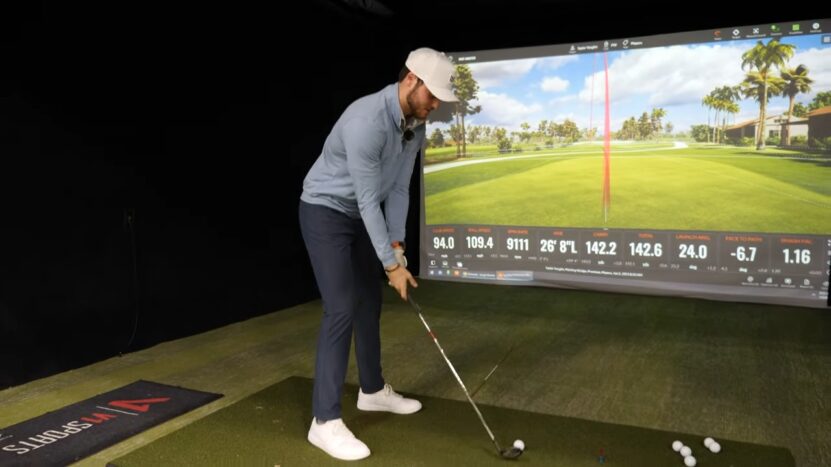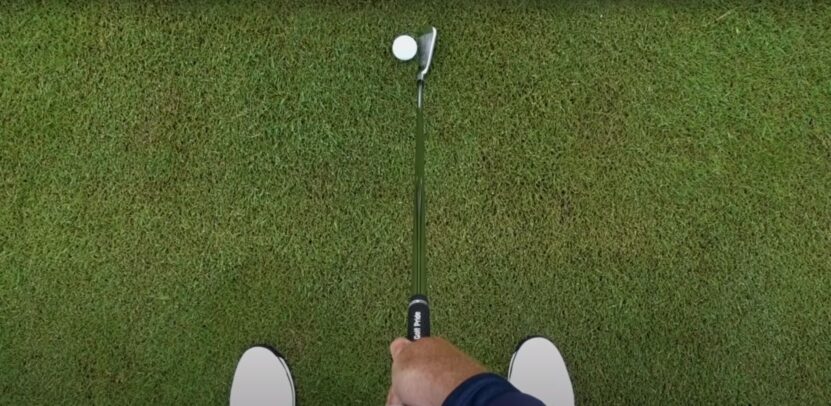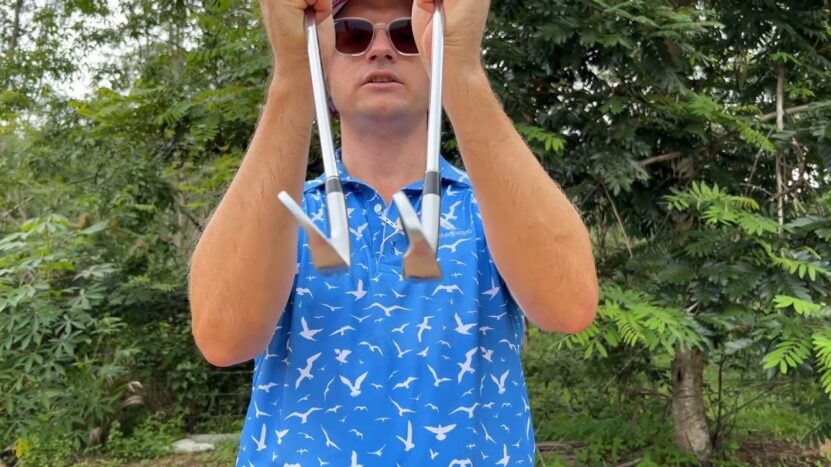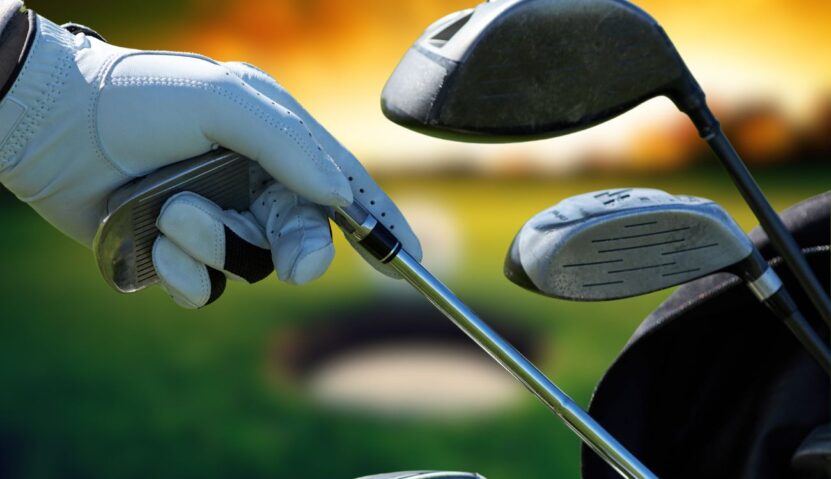Choosing the right type of golf irons can be a game-changing decision. Whether you’re a pro or a weekend golfer, the debate between blades and cavity back irons is one that every golfer will encounter.
The blades versus cavity back debate has been the subject of many discussions in the golfing world. Essentially, this comparison is a matter of control versus forgiveness. But is it that simple? We’ll explore the various facets of each type of iron to get to the root of the debate.
Before we begin our exploration of the influence of loft adjustments on golfing distance, a fundamental aspect of your golf game, it’s worthwhile to also consider the choice between blades and cavity back irons, weighing the balance between control and forgiveness, as discussed in another insightful article.
Now, let us go through different intricacies of each type, looking at control, forgiveness, performance metrics, and more to help you make an informed choice.
The Fundamentals of Golf Irons
In golf, an iron is a type of club used to propel the ball towards the hole. It’s generally used when you are 200 yards or less away from the green. They are designed with a flat, angled face and a shorter shaft compared to woods, which are for longer distances.
Classification
Irons are classified into several types, but the most basic classification is between blades and cavity back irons. These two dominate the market and are the focus of our analysis. In the subsequent sections, we will dissect the characteristics of each.
What are Blades?
Blades, also known as “muscle-backs” or “players’ irons,” have been around for quite some time. They’re the traditional design and are often favored by professional golfers and low-handicap players.
Key Features
- Solid Construction: Blades are usually made from a solid piece of metal, which provides a more direct impact on the ball.
- Center of Gravity: The center of gravity in blade irons is closer to the clubface, allowing for better shot-shaping abilities.
- Slim Profile: They typically have a thinner top line and sole, which appeals to golfers who like a sleek look.
What are Cavity Back Irons?
Cavity back irons are a more recent development in golf technology. They are designed for the everyday golfer and focus on forgiveness and ease of use, making them suitable for mid to high-handicap players.
Key Features
- Perimeter Weighting: Unlike blades, cavity backs are designed with weight distributed around the perimeter of the clubface, offering more forgiveness on off-center hits.
- Larger Sweet Spot: Due to the weight distribution, they have a larger “sweet spot,” allowing for better results even when the ball isn’t struck perfectly.
Control Factor

In golf, control refers to your ability to manipulate the ball’s flight, spin, and landing. It’s a critical aspect for experienced golfers who want to tackle complex courses effectively. Control is often linked with blades, but how do they measure up to cavity back irons in this regard?
Blade Irons for Control
Blades are often synonymous with control. With their solid construction and precise center of gravity, they allow you to shape your shots more effectively.
- Feel: Due to the solid construction, blades provide better feedback, helping you understand your hits and misses more clearly.
- Maneuverability: Their sleek design and balanced weight allow for more comfortable wrist movement, facilitating better control over your swings and shots.
Forgiveness Factor
In golf terminology, “forgiveness” means that the club provides a safety net for less-than-perfect shots. This is crucial for beginners and high-handicappers who haven’t mastered ball striking. So, how do cavity back irons compare them when it comes to forgiveness?
Cavity Backs
Cavity back irons are specifically engineered for forgiveness. The perimeter weighting and larger sweet spot make it easier to get decent results even from off-center hits. There is always some room for error.
The design allows for greater error margins, meaning that your shots will be less affected by minor mistakes. Another major factor is consistency. Cavity back irons generally produce more consistent distances, even when you don’t hit the ball perfectly.
Performance Metrics

When deciding between blades and cavity back irons, it’s essential to understand the performance metrics that matter. These typically include distance, accuracy, and trajectory.
Measuring Up
Here’s how the two types of irons measure up based on common performance metrics:
- Distance: Generally, cavity back irons might offer more distance due to their construction and weight distribution.
- Accuracy: They usually win in the accuracy department, especially for those who can control them effectively.
- Trajectory: They allow for a more dynamic range of shot trajectories, from low punches to high lobs.
Suitability for Skill Level
The golf course sees a wide range of skill levels, from novices taking their first swing to seasoned professionals competing in tournaments. Your skill level can significantly impact your choice between these two.
Blades for the Experienced
Blades are generally recommended for low-handicap players who have already developed a consistent swing. These irons require precision and skill, which comes from experience.
- Fine-tuned Shots: Blades offer more room for nuanced shot-making, letting experienced players take full advantage of their skills.
- Feedback: The solid construction of blades provides better feedback, helping advanced players refine their technique even further.
Material and Construction

The materials used in constructing a golf club can drastically affect its performance, durability, and even its aesthetic appeal. Typically, irons are made from stainless steel, but variations in material and construction methods can lead to different playing characteristics.
Blades vs. Cavity Back Materials
Blades are usually crafted from forged steel, providing a softer feel and allowing for intricate shaping, ideal for more advanced players.
When we are talking about cavity backs, they are generally made from cast steel, making them harder but more durable, suitable for players who prioritize forgiveness over feel.
Price Consideration
Golf clubs are a significant investment. Prices can range from a few hundred to several thousand dollars for a set. Knowing what you’re paying for—and why—can help you make a more informed decision.
Cost Comparison
- Value for Money: These generally offer better value for money, especially for those still honing their skills.
- Long-Term Investment: Blades can be a worthy investment for those committed to mastering the game, as their potential for control and finesse is unparalleled.
What Do Professionals Say?
According to many professionals, blades are the gold standard for those aiming for tour-level performance. However, even some pros prefer cavity back irons for their forgiveness.
- PGA Tours: Blades are more commonly seen on the PGA Tour, where control and precision are critical.
- Coaching Advice: Many golf coaches recommend cavity back irons for amateurs and weekend players due to their forgiving nature.
Frequently Asked Questions (FAQ)

Can a beginner use Blade Irons?
While there’s no rule against it, blade irons require a certain level of skill and control that most beginners might find challenging. Cavity backs are generally more forgiving and easier to use for newcomers.
Does one type provide more distance than the other?
They generally offer greater distance because of their construction and weight distribution, which can make it easier for beginners and high-handicappers to achieve more distance.
How do I know which type is suitable for my skill level?
Your handicap can be a good indicator. If you’re a low-handicap player, blades might be more suitable. If you’re a high-handicap player or a beginner, cavity backs are likely a better fit.
Can the type of iron affect my swing speed?
Blade irons, with their concentrated weight and solid construction, may require a faster swing speed to generate distance and accuracy. They are generally more forgiving and may not require as much swing speed.
Summing it Up
After traversing the detailed landscape of blades and cavity back irons, it’s evident that the decision between the two boils down to what you value most: control or forgiveness.
Blades are the go-to option for seasoned golfers who seek to fine-tune their shots and crave a club that responds well to skill and precision.
Conversely, cavity backs extend a forgiving hand to those still learning the ropes or those who prioritize ease and consistency.

